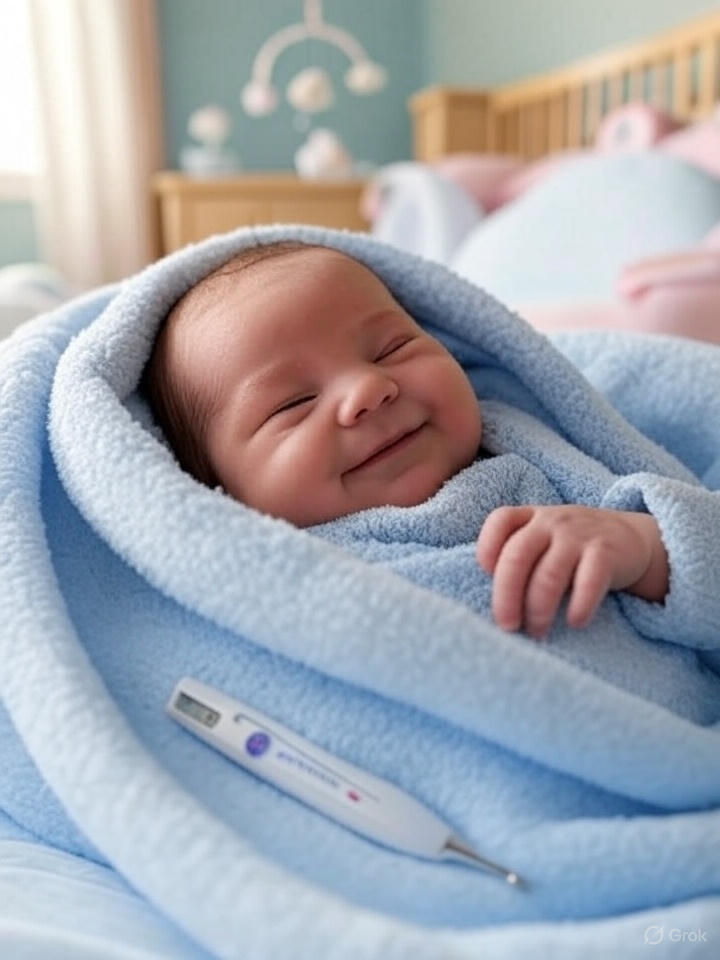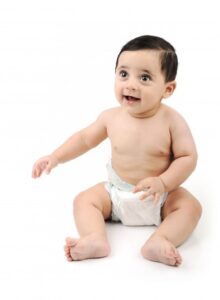As a new parent, deciphering your baby’s cries can feel like solving an intricate puzzle. One of the most common concerns parents face is whether their baby is crying due to being cold. Understanding the relationship between temperature and infant crying is crucial for ensuring your little one’s comfort and well-being. This comprehensive guide will explore everything you need to know about babies crying when cold, how to identify temperature-related distress, and effective strategies to keep your baby comfortable.
Understanding Baby’s Temperature Regulation
Babies are born with an immature thermoregulatory system, making them particularly vulnerable to temperature changes. Unlike adults, newborns cannot effectively regulate their body temperature through shivering or sweating. This biological limitation makes them entirely dependent on their caregivers to maintain optimal comfort levels.
According to medical research from reputable sources like the American Academy of Pediatrics, babies lose heat much faster than adults due to their larger surface area relative to body weight. Their thin skin and limited subcutaneous fat provide minimal insulation, making them susceptible to rapid temperature fluctuations.
The ideal room temperature for babies ranges between 68-70°F (20-21°C). When the environment drops below this range, babies may experience discomfort that manifests through crying. This is particularly important for parents whose babies may have spent time in specialized care units, as discussed in our previous article about which babies are kept in NICU, where temperature control is meticulously managed.
Do Babies Cry When Cold? The Science Behind Temperature-Related Distress

Yes, babies absolutely cry when they’re cold. This crying serves as their primary communication method to signal discomfort and alert caregivers to their needs. Research published in pediatric journals indicates that temperature discomfort is one of the leading causes of infant crying, especially during the first few months of life.
When babies feel cold, their bodies trigger a stress response that releases cortisol and other stress hormones. This physiological reaction often manifests as crying, which serves multiple purposes:
- Communication: Crying alerts parents to the baby’s discomfort
- Heat Generation: The physical act of crying generates some body heat
- Attention-Seeking: Ensures caregivers address the temperature issue promptly
Studies from Harvard Medical School have shown that babies can detect temperature changes as small as 1-2 degrees Fahrenheit, making them incredibly sensitive to environmental shifts that adults might not even notice.
Identifying Cold-Related Crying: Signs and Symptoms
Recognizing when your baby is crying due to cold requires careful observation of accompanying physical signs. Here are key indicators that temperature may be the culprit:
Physical Signs of a Cold Baby
Skin Temperature and Color Changes
- Cool skin, particularly on the chest, back, and extremities
- Pale or slightly bluish coloring around the lips or fingernails
- Cold hands and feet (though note that babies’ extremities are naturally cooler)
Behavioral Indicators
- Fussiness that doesn’t respond to feeding or diaper changes
- Difficulty settling even when held
- Increased crying intensity when undressed
- Seeking warmth by curling into fetal position
Sleep Pattern Disruptions
- Frequent waking during sleep
- Restless sleep with jerky movements
- Difficulty falling asleep despite appearing tired
Distinguishing Cold-Related Crying from Other Causes
Understanding different types of crying can help parents respond appropriately. Cold-related crying typically:
- Occurs more frequently during cooler times of day
- Intensifies when baby is undressed for diaper changes
- Subsides when baby is warmed appropriately
- May be accompanied by hiccups (a sign of rapid temperature change)
For parents navigating these early challenges, tools like our Bible verse generator can provide comfort and spiritual guidance during stressful moments of trying to soothe a crying baby.
The Optimal Temperature Range for Baby Comfort
Maintaining the right temperature environment is crucial for your baby’s comfort and health. Research from Mayo Clinic provides clear guidelines for optimal temperature ranges:
Room Temperature Guidelines
- Daytime: 68-72°F (20-22°C)
- Nighttime: 65-68°F (18-20°C)
- Bath time: Room should be 75-80°F (24-27°C)
Clothing Guidelines by Temperature
70-75°F (21-24°C): Light cotton onesie or bodysuit 65-70°F (18-21°C): Onesie plus light pants or sleeper 60-65°F (15-18°C): Add a light sweater or cardigan Below 60°F (15°C): Additional layers including hat and socks
The “one additional layer” rule is often recommended by pediatricians: dress your baby in one more layer than you would wear to be comfortable in the same environment.
Health Implications of Temperature Discomfort
Chronic temperature discomfort can have several health implications for babies. According to research from Johns Hopkins Medicine, prolonged exposure to cold can lead to:
Short-term Effects
- Increased caloric expenditure as the body works to maintain temperature
- Sleep disruption affecting growth hormone production
- Increased susceptibility to respiratory infections
- Feeding difficulties due to discomfort
Long-term Considerations
- Potential impact on weight gain and growth patterns
- Development of sleep associations that may persist
- Increased stress on the developing nervous system
For babies who have experienced NICU care, as detailed in our comprehensive NICU guide, temperature regulation may be even more challenging due to their potentially compromised development.
Effective Strategies for Keeping Baby Warm
Layering Techniques
Proper layering is essential for maintaining your baby’s body temperature. Start with a base layer of soft, breathable fabric like cotton, add insulating layers as needed, and finish with a protective outer layer if going outdoors.
Base Layer Options:
- Cotton onesies or bodysuits
- Bamboo fiber clothing (naturally temperature-regulating)
- Merino wool for sensitive skin
Insulating Layers:
- Cotton or fleece pants and tops
- Sleep sacks instead of loose blankets
- Swaddles for newborns who still have the startle reflex
Sleep Environment Optimization
Creating the ideal sleep environment involves more than just temperature control. Consider these factors:
Bedding and Sleep Surfaces:
- Use fitted sheets appropriate for the season
- Avoid loose blankets, pillows, or bumpers (SIDS risk)
- Consider sleep sacks or wearable blankets
- Ensure the mattress isn’t against cold walls
Room Setup:
- Use a reliable room thermometer
- Consider a humidifier to prevent dry air
- Block drafts from windows or doors
- Position the crib away from heating/cooling vents
For parents managing multiple tasks while ensuring baby comfort, productivity tools like our trade analyzer can help streamline other responsibilities, allowing more focus on baby care.
When Temperature Concerns Require Medical Attention
While crying due to cold is normal, certain situations warrant immediate medical attention:
Emergency Warning Signs
- Core body temperature below 97°F (36.1°C) or above 100.4°F (38°C)
- Lethargy or unusual sleepiness
- Difficulty breathing or rapid breathing
- Refusal to eat or drink
- Skin color changes (blue or gray tinge)
Consulting Healthcare Providers
Regular pediatric checkups should include discussions about temperature regulation and comfort. Be prepared to discuss:
- Your baby’s typical crying patterns
- Environmental conditions in your home
- Any concerns about temperature-related discomfort
- Sleep patterns and feeding behaviors
Information from authoritative sources like the Centers for Disease Control and Prevention emphasizes the importance of professional medical guidance for any persistent concerns about infant comfort and health.
Regional and Seasonal Considerations
Temperature management varies significantly based on geographic location and seasonal changes. Parents in different climates need tailored approaches:
Hot Climate Considerations
- Focus on preventing overheating
- Use lightweight, breathable fabrics
- Ensure adequate ventilation
- Watch for signs of heat-related discomfort
Cold Climate Strategies
- Layer appropriately for outdoor excursions
- Preheat the car before placing baby in car seat
- Use appropriate winter gear designed for infants
- Monitor indoor humidity levels
Seasonal Transitions
During season changes, babies may need time to adjust to new temperature ranges. Gradually adjust clothing and room temperature rather than making sudden changes.
Technology and Tools for Temperature Monitoring
Modern technology offers various tools to help parents maintain optimal temperature conditions:
Digital Monitoring Solutions
- Smart thermostats with remote monitoring capabilities
- Wireless room temperature sensors
- Wearable baby monitors that track body temperature
- Smartphone apps for tracking environmental conditions
Traditional Monitoring Methods
- Standard room thermometers
- Touch tests (feeling baby’s chest or back of neck)
- Observational assessment of comfort signs
- Regular temperature checks during routine care
When documenting your baby’s patterns and needs, tools like our fancy text tool can help create organized, readable notes for healthcare providers or caregivers.
Building Confidence in Temperature Management
Developing confidence in managing your baby’s temperature comfort comes with experience and knowledge. Key strategies include:
Observation Skills Development
- Learn to recognize your baby’s unique comfort cues
- Track patterns in crying and comfort levels
- Note environmental factors that affect your baby
- Develop intuition about appropriate clothing choices
Creating Support Systems
- Connect with other parents for advice and reassurance
- Maintain open communication with healthcare providers
- Join parenting groups or online communities
- Seek guidance from experienced family members or friends
Practical Experience Building
- Practice temperature checks regularly
- Experiment with different clothing combinations
- Learn to adjust environmental controls effectively
- Develop confidence in your parenting instincts
Conclusion: Ensuring Your Baby’s Comfort and Well-being
Understanding that babies cry when cold is fundamental to responsive parenting. By recognizing the signs of temperature-related discomfort, maintaining appropriate environmental conditions, and responding promptly to your baby’s needs, you can significantly improve their comfort and reduce crying episodes.
Remember that every baby is unique, and what works for one may not work for another. Trust your instincts while staying informed about best practices from reliable sources like WebMD and Healthline. The journey of parenthood involves continuous learning and adaptation.
Temperature regulation is just one aspect of comprehensive baby care. For parents navigating complex situations, such as those detailed in our guide about NICU babies, remember that seeking professional guidance is always appropriate when concerns arise.
As you develop your skills in reading your baby’s cues and maintaining their comfort, you’re building the foundation for a strong, responsive relationship that will benefit both you and your child throughout their development. Stay patient with yourself and your baby as you both learn and grow together.
The key to successful temperature management lies in consistent observation, appropriate response, and confidence in your ability to meet your baby’s needs. With time, patience, and the right knowledge, you’ll become expert at keeping your little one comfortable and content, reducing temperature-related crying and promoting better sleep and overall well-being for the entire family.




